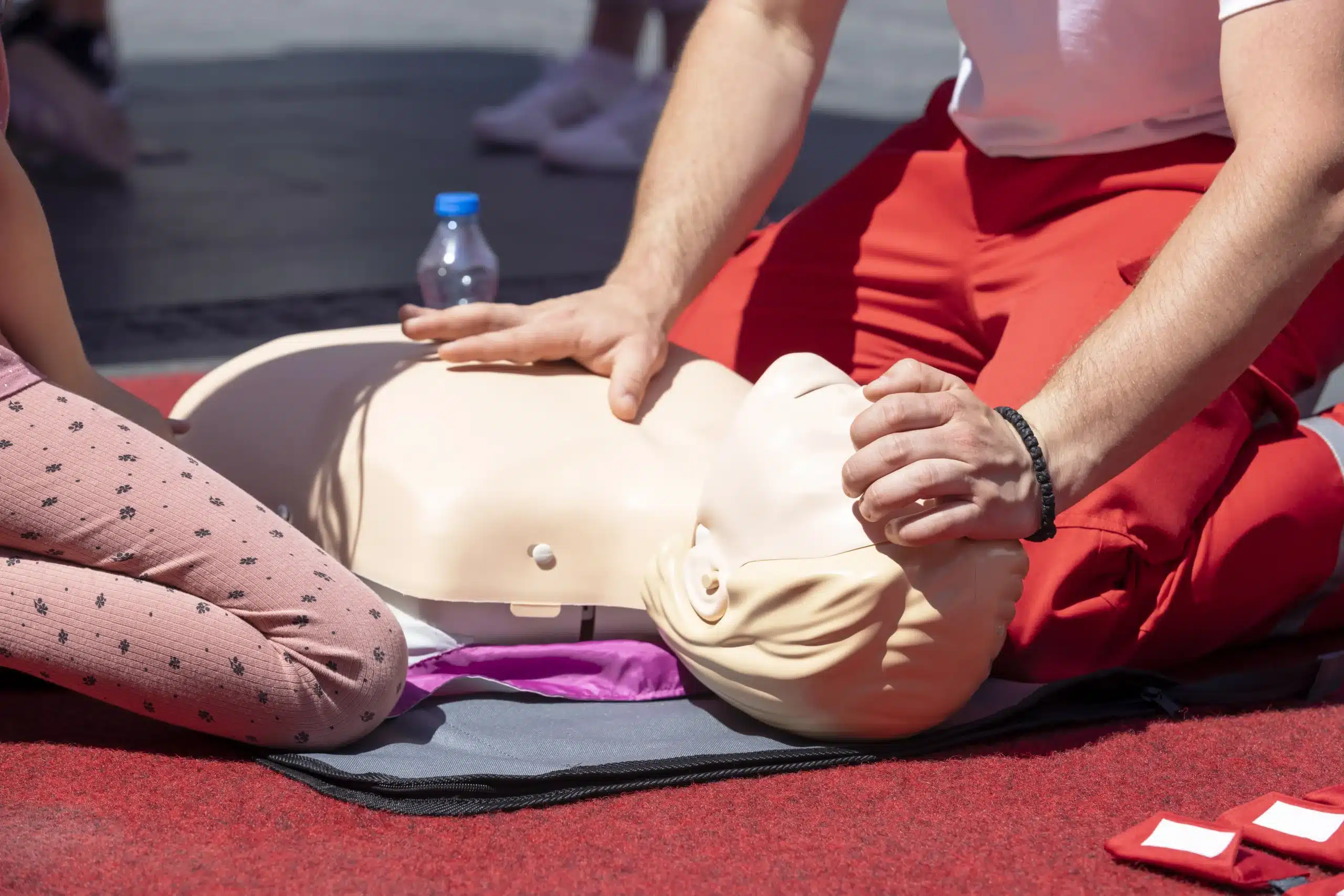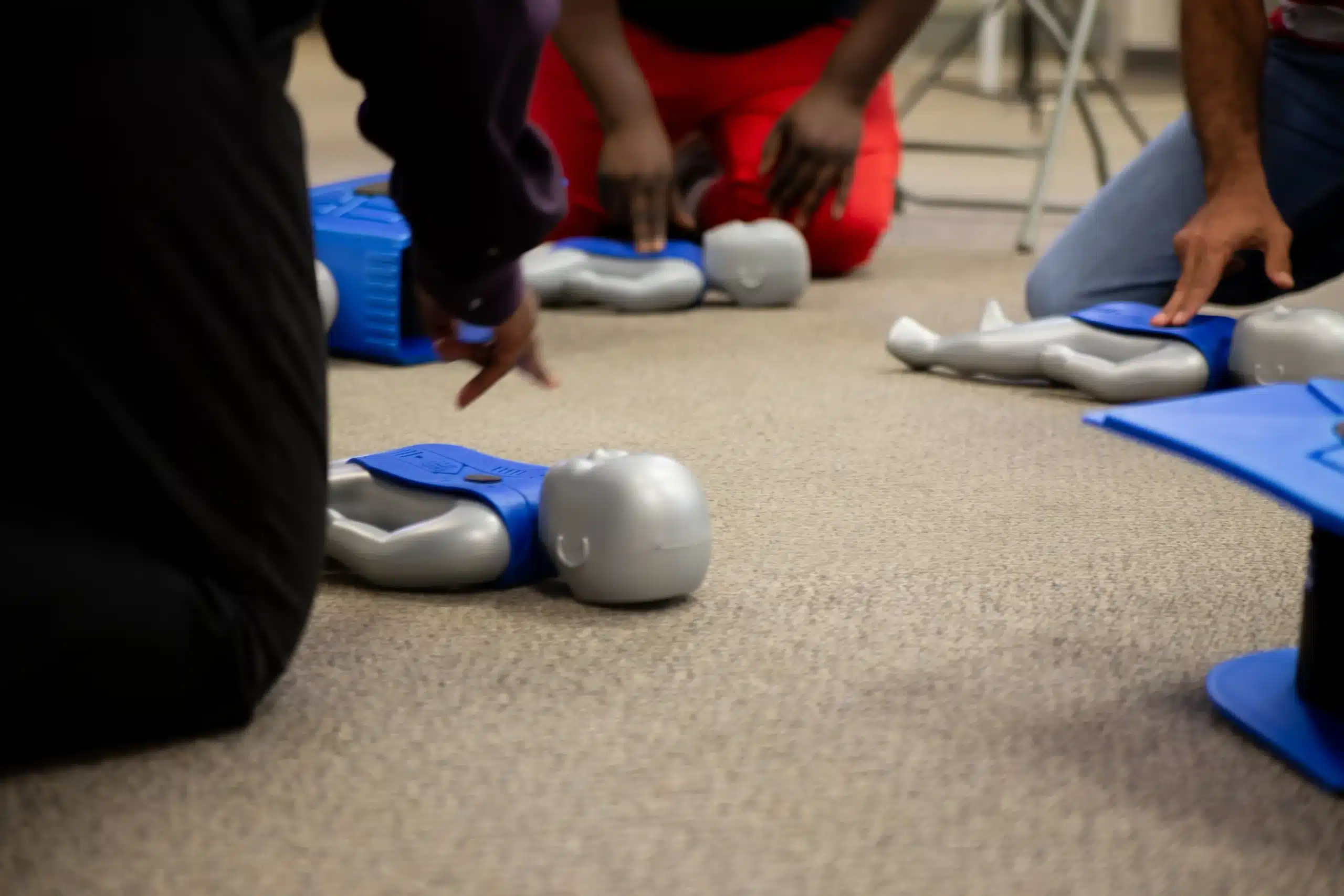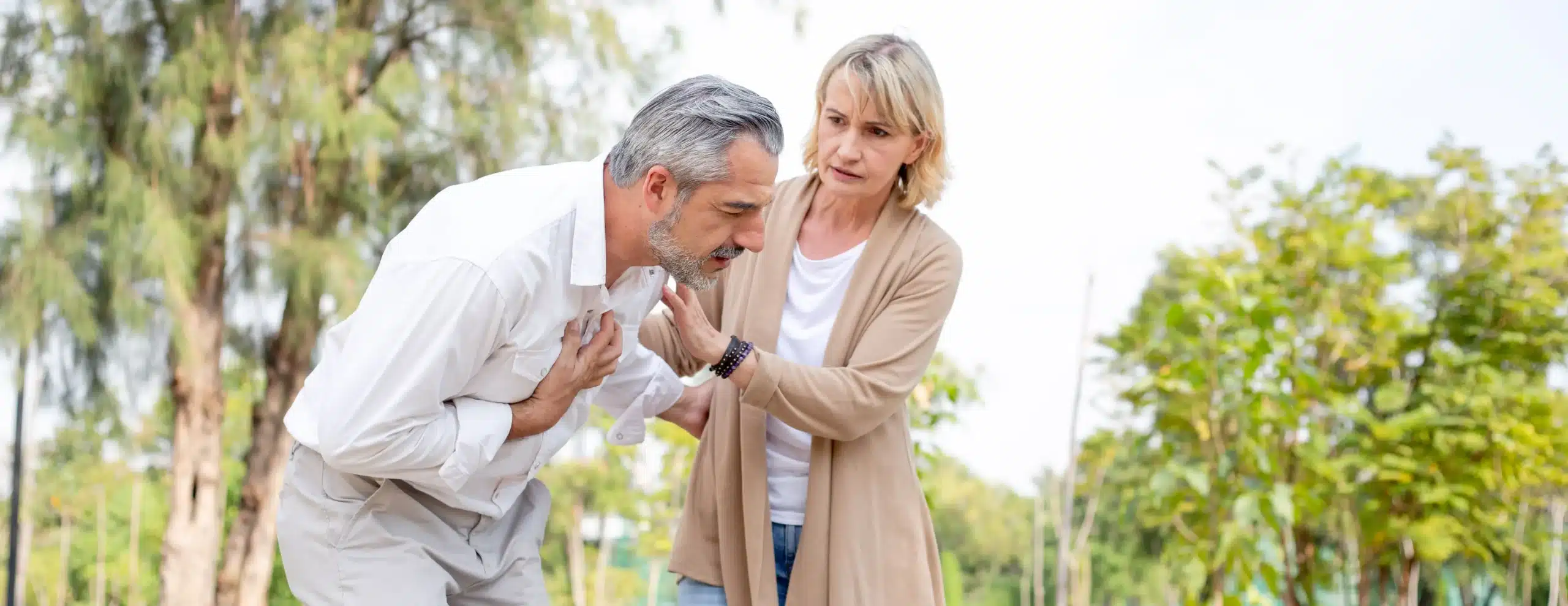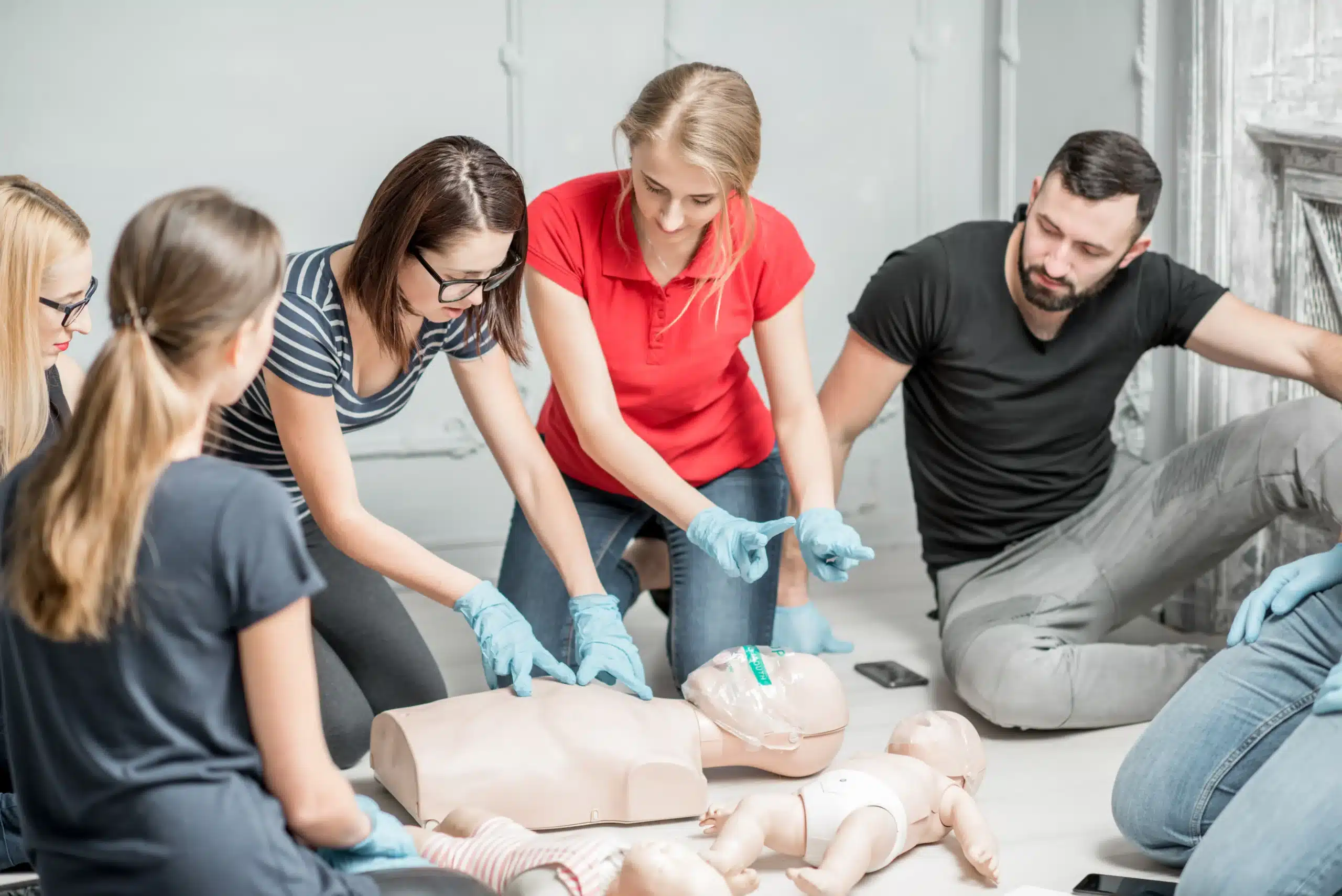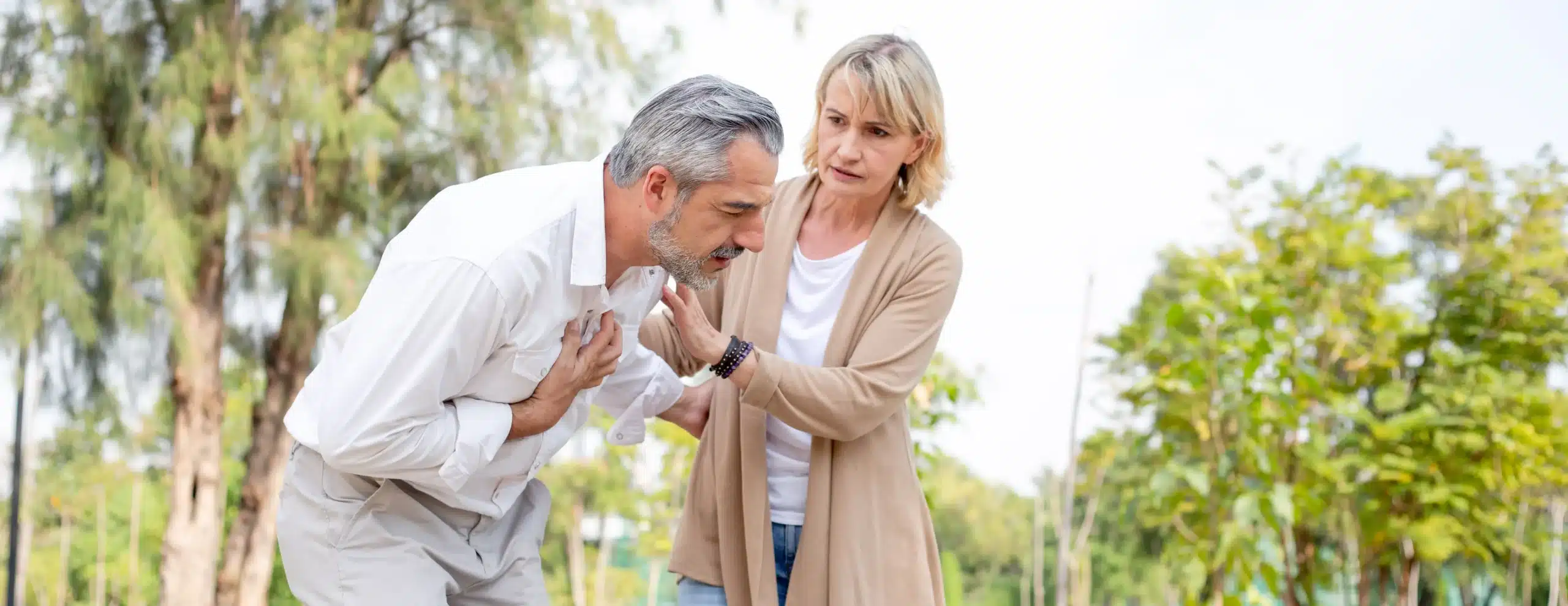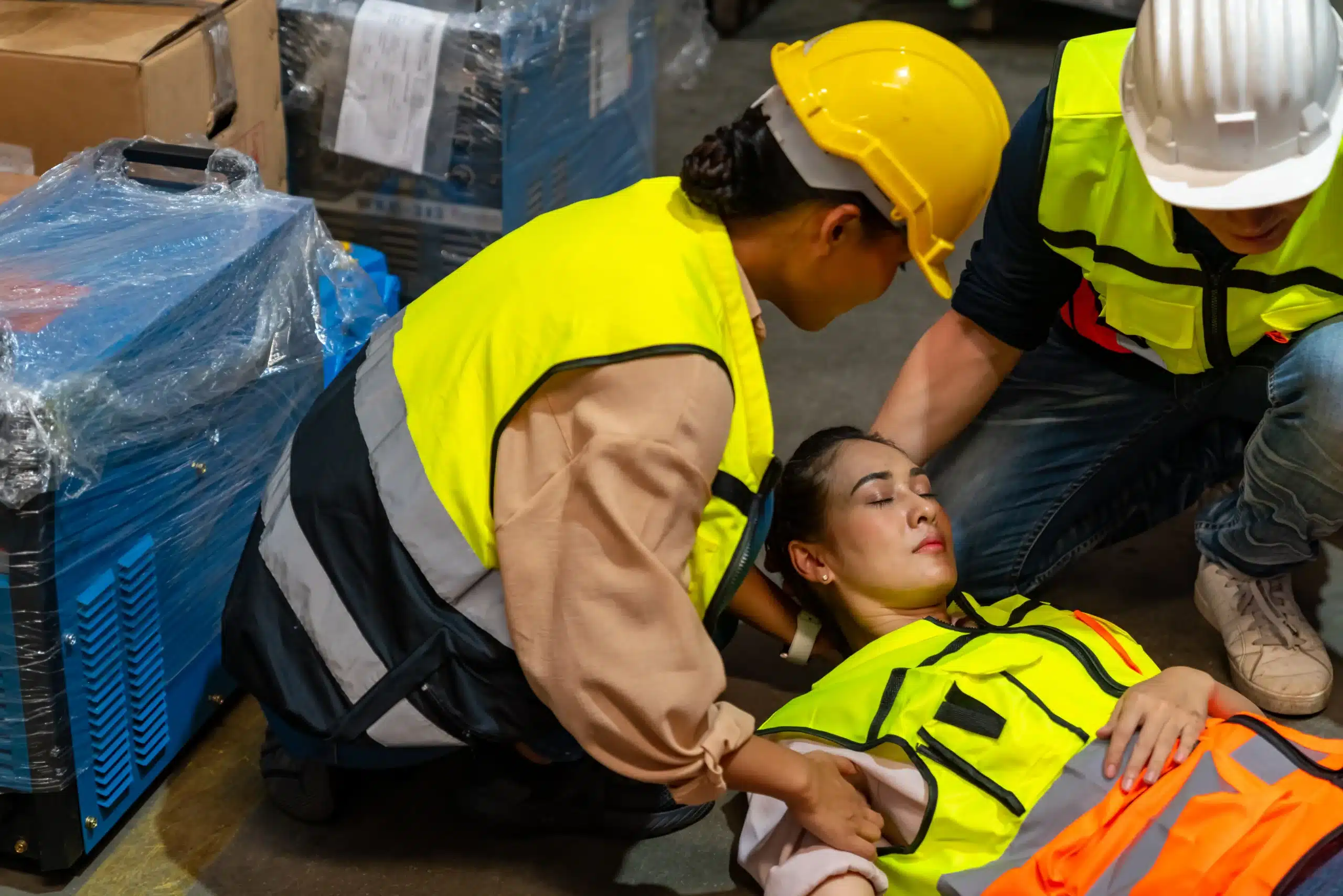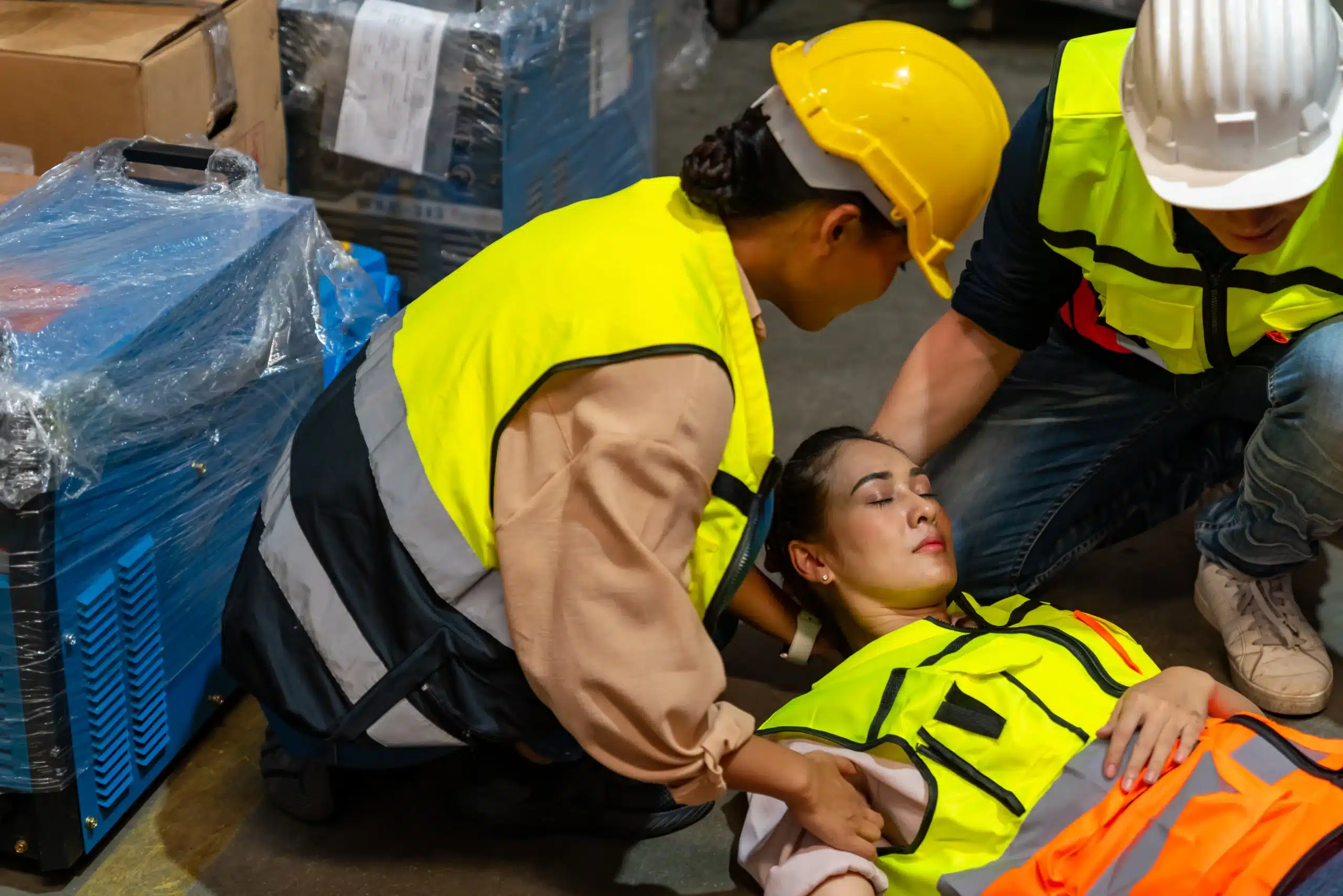BLS certification is more than just a credential—it’s a pathway to confidence and preparedness in medical emergencies. Whether you’re a healthcare professional or simply someone who wants to be equipped to help, BLS training provides essential life-saving skills. This guide will walk you through the ins and outs of BLS certification, from what the training covers to how it can benefit your career and personal life. If you’ve been searching for “BLS certification near me,” you’ll find everything you need to know right here. Let’s explore how BLS can empower you to make a difference.
Key Takeaways
- BLS certification equips you with essential life-saving skills. From CPR and AED use to airway management, BLS training prepares you to handle various medical emergencies, making you a valuable asset at work, at home, or in your community.
- Choosing the right BLS course requires careful consideration. Evaluate your learning style and schedule, compare course formats (in-person, online, or blended), and research providers. Look for reputable organizations like the American Heart Association and don’t hesitate to read reviews before committing to a course.
- Maintaining your BLS skills is crucial for long-term effectiveness. Stay up-to-date with the latest guidelines by renewing your certification regularly and pursuing continuing education opportunities. This ensures you can confidently respond to emergencies and provide the best possible care.
What is BLS Certification & Why is it Important?
BLS (Basic Life Support) certification gives you the skills to respond to life-threatening emergencies. It focuses on essential life-saving techniques, including CPR (Cardiopulmonary Resuscitation), using an AED (Automated External Defibrillator), and recognizing medical emergencies. This training is crucial for healthcare professionals and anyone who wants to be prepared to help in emergencies, at work, at home, or out in the community. Knowing BLS makes you a valuable resource in any crisis.
What BLS Covers
BLS certification training covers several critical skills. You’ll learn how to perform high-quality CPR for adults, children, and infants, manage airways, and assist people who are choking. The training includes single-rescuer and team-based resuscitation scenarios, preparing you for various situations you might encounter in or outside of a hospital setting. Teamwork and clear communication during emergencies are also key components of BLS training. These skills are practiced through simulated scenarios. The American Heart Association provides detailed information on BLS course options. You can also find convenient and affordable BLS courses in Berkeley through our website.
Who Needs BLS?
BLS certification is essential for many healthcare professionals, including doctors, nurses, paramedics, and other emergency responders. It’s often a job requirement in healthcare, ensuring staff can handle emergencies effectively. Beyond healthcare providers, anyone interested in improving their emergency response skills can benefit from BLS training. It’s a valuable asset in professional and personal settings. You can find BLS courses near you on our website, Berkeley CPR Classes. We also offer discount group classes for those looking to train together.
BLS in Emergencies
BLS training prepares you to respond effectively to medical emergencies, providing critical assistance when every second counts. The skills you gain can make a significant difference, potentially saving lives. For healthcare professionals, understanding BLS recertification is also important for maintaining your credentials and staying up-to-date with the latest guidelines. At Berkeley CPR Classes, we offer a variety of courses, including BLS certification, to help you gain these essential skills. Check out our low price guarantee and find a class that fits your needs and budget.
Find BLS Certification Courses Near You
Finding the right BLS certification course requires a little research. Start by exploring local options and then broaden your search online if needed. Here’s a breakdown to get you started:
Local Training
Begin your search close to home. Check if established providers like the American Heart Association or American Red Cross offer BLS courses in your area. Local hospitals, community centers, and fire departments often host certification courses, too. Here in Berkeley, you can find convenient, high-quality training through providers like Safety Training Seminars and Berkeley CPR Classes. Berkeley CPR Classes offers a variety of American Heart Association-certified courses, including discounts for groups, making BLS training accessible to our community. They also offer convenient renewal options, so check them out if you need to recertify.
Online Search Tips
If local options are limited, expand your search online. A quick search for “BLS certification near me” will generate a list of potential providers. Don’t stop there, though. Explore BLS training reviews to understand the quality of instruction and the overall learning experience. Reading reviews from previous participants offers valuable insights. Also, remember that if you’re simply looking for recertification, many organizations offer online BLS recertification courses, which can be a convenient and affordable option.
Choosing a Location
Once you’ve identified a few potential training centers, consider practical factors. Think about your learning style, schedule, and budget when selecting a BLS provider. Do you prefer hands-on, in-person instruction or the flexibility of online learning? Does the course schedule work with your availability? Is the cost within your budget? Finally, remember that quality course materials are crucial for effective BLS certification. Not all BLS courses are created equal, so choose a reputable provider with a proven track record.
Choose the Right BLS Training Format
Finding the right BLS training format depends on your learning style, schedule, and budget. Let’s break down the most common options: in-person, online, and blended learning, so you can find the best fit.
In-Person Courses
In-person BLS training offers hands-on learning and direct interaction with a certified instructor. This format is ideal for those who learn best in a traditional classroom setting and value real-time feedback. You’ll practice skills on mannequins and get personalized coaching, which can build confidence. In-person BLS courses offer a structured learning environment and ensure you meet all workplace requirements, including those set by OSHA. Berkeley CPR Classes offers in-person training daily, making it easy to find a class that fits your schedule.
Online Certification
Online BLS certification provides flexibility and convenience. You can learn at your own pace, anytime, anywhere with an internet connection. This format often works well for busy professionals or those who prefer self-directed learning. However, online courses typically don’t include hands-on skill demonstrations. While convenient, they might not meet all workplace requirements, so check with your employer before choosing this option. The American Red Cross offers a fully online BLS course if this format suits your needs.
Blended Learning
Blended learning combines online coursework with in-person skills practice. You’ll work through the cognitive portion of the course online at your own speed, then attend an in-person session to demonstrate your skills and receive feedback from an instructor. This approach offers flexibility while still ensuring you get the hands-on experience necessary for real-world scenarios. The Red Cross also offers blended learning for BLS certification.
Pros & Cons of Each
Here’s a quick overview of the advantages and disadvantages of each format:
- In-Person: Pros: Hands-on practice, immediate feedback, meets workplace requirements. Cons: Less flexible scheduling, requires travel.
- Online: Pros: Flexible schedule, self-paced learning, often more affordable. Cons: May not meet all workplace requirements, lacks hands-on practice.
- Blended: Pros: Combines online flexibility with in-person skills practice, meets workplace requirements. Cons: Requires some in-person time, may be slightly more expensive than online-only options. If you’re looking for in-person or blended learning in the Berkeley area, check out the BLS course options at Berkeley CPR Classes.
What Does BLS Certification Cost?
One of the most common questions about BLS certification is the cost. It’s an important factor when choosing a course, but remember that prioritizing quality training is key. A well-taught course can equip you with the confidence and skills to make a real difference in an emergency.
Average Prices & Factors
BLS certification costs typically range from $75 to $150. Several things influence the final price, including your location, the training provider, and whether you choose an online, in-person, or blended learning course. For example, a course in a major metropolitan area might be slightly more expensive than one in a smaller town. The training organization also plays a role; some providers, like Berkeley CPR Classes, offer a low price guarantee.
Whether you’re getting certified for the first time or renewing your BLS certification can also affect the price. Renewal courses are often shorter, which can sometimes mean a lower cost. Finally, consider the course format. Hybrid courses, which combine online learning with in-person skills practice, may have different pricing than fully online or in-person options. For more information on the American Heart Association BLS Certification, visit this page.
Discounts & Financial Aid
Looking to save on BLS certification? Many training centers offer discounts for group registrations, making it a great option if you’re signing up with friends or colleagues. You might also find discounts for students or healthcare professionals. It’s always worth asking about potential discounts or group rates when you register. Some organizations even offer financial aid or scholarships, so be sure to inquire about those possibilities as well. In some cases, employers will cover the cost of BLS certification for their employees as part of professional development. Don’t hesitate to ask your employer if this is an option for you.
Choose a Quality BLS Provider
Finding the right BLS provider is crucial for a valuable learning experience. It’s more than just getting a certification—it’s about gaining the confidence and skills to act effectively in emergencies. Here’s what to consider:
Accreditation & Instructors
Look for training centers affiliated with nationally recognized organizations like the American Heart Association. These organizations maintain high standards for BLS training, ensuring your certification is widely accepted. A reputable provider will also have experienced, certified instructors who can offer personalized guidance and support. Berkeley CPR Classes, for example, offers American Heart Association certified courses and emphasizes excellent customer service. Check if the provider offers resources like blended learning options and instructor-led training to enhance your learning.
Course Content & Reviews
A quality BLS course should cover essential topics such as CPR, AED use, and how to respond to choking emergencies. Before committing to a course, review the curriculum to ensure it aligns with the latest guidelines. Reading BLS training reviews can also give you valuable insights into other students’ experiences. Look for comments about the quality of instruction, course materials, and overall learning environment. American BLS, for instance, offers courses following AHA guidelines and updates them frequently.
Red Flags
Be wary of providers who promise unrealistically low prices or guaranteed certification without proper training. A legitimate BLS course requires dedicated time and effort. Also, be cautious of providers with limited or outdated course materials. A high-quality provider will keep their curriculum current with the latest medical practices and guidelines. Finally, if you’re recertifying, be mindful of potential pitfalls like forgetting to schedule your in-person skills check, which can delay the process. Choose a provider who offers clear communication and support throughout your recertification.
Prepare for Your BLS Course
Getting ready for your BLS course doesn’t require a ton of prep work, but a little planning goes a long way. Knowing what to expect and gathering your materials ahead of time helps you focus on learning these essential life-saving skills. Whether you’re getting certified for the first time or renewing your BLS card, this section will help you prepare.
Prerequisites & Study Materials
One of the best things about BLS certification is its accessibility. The American Heart Association offers various ways to get your BLS card, including in-person and online courses. This flexibility makes the training manageable for busy schedules and different learning styles. Generally, there aren’t any prerequisites for taking a BLS course. For renewal courses, you’ll need to present proof of your current BLS provider card. Your BLS renewal course will typically include all the essential training materials, a skills testing session, and the issuance of your new certification card.
Tips for Success
A little advanced preparation can make a big difference in how smoothly your BLS training goes. Before your class, familiarize yourself with the course material. Even a quick review can prevent you from feeling overwhelmed during the training. Knowing what to expect helps you absorb the information more effectively. If your course includes an in-person skills check, be sure to schedule it promptly. This prevents delays and ensures you meet your certification or recertification deadline. Planning ahead minimizes stress and sets you up for success in your BLS course. You’ll be able to confidently learn the skills and get your BLS certification without a hitch.
Maintain Your BLS Certification
Once you’ve earned your BLS certification, your learning journey isn’t over. Maintaining your skills and staying up-to-date with the latest guidelines is crucial for providing effective care in emergencies. This involves understanding renewal processes, pursuing continuing education, and actively seeking current best practices.
Renewals & Continuing Education
BLS certification requires periodic renewal to ensure your skills remain sharp and aligned with current guidelines. Renewal courses, such as those offered by Safety Training Seminars, typically include essential training materials, a skills testing session, and the issuance of a new certification card. The American Heart Association offers various options for BLS certification and renewal, including both in-person and online courses, allowing you to choose the format that best fits your schedule and learning style.
Continuing education in BLS goes beyond simply renewing your certification. It involves actively seeking opportunities to expand your knowledge and refine your skills through workshops, advanced courses, or online resources that cover emerging techniques and best practices in emergency care. By engaging in continuing education, you not only maintain your competency but also demonstrate a commitment to providing the highest quality of care.
Staying Current
The medical field is constantly evolving, with new research and guidelines emerging regularly. Staying current with these advancements is essential for any BLS-certified individual. This article highlights how staying updated on BLS recertification requirements helps healthcare professionals adapt to these changes and provide effective care. It’s important to recognize that not all BLS recertification courses are created equal. Understanding potential pitfalls during recertification and choosing reputable providers, like Berkeley CPR Classes, can help you avoid common mistakes and ensure you receive high-quality training. Debunking common myths about BLS certification can further enhance your understanding and ensure you’re well-informed. Staying current with updates in emergency care and seeking out reliable resources will help you maintain your skills and confidence in providing BLS.
BLS Certification & Your Career
BLS certification can significantly impact your professional life, whether a job requirement or a way to strengthen your resume. It shows employers you’re committed to patient safety and prepared to handle critical situations. Let’s explore how BLS certification can influence your career path.
Jobs Requiring BLS
Many healthcare professions list BLS certification as a requirement. It’s often a prerequisite for registered nurses, paramedics, emergency medical technicians (EMTs), physician assistants, respiratory therapists, and other healthcare providers. Even roles outside of direct patient care, such as healthcare administration or education, may prefer or require BLS certification. For example, certified nursing assistants, medical assistants, and those working in hospitals or clinics often need this training. Specific requirements vary, so check with your employer or licensing board. If you’re considering a career in healthcare, getting your BLS certification is a smart first step.
Career Advancement
Even if your current role doesn’t require BLS certification, it can create opportunities for advancement. It signals to employers that you’re dedicated to professional development and possess essential life-saving skills. A BLS certification can give you a competitive edge when applying for promotions or new positions. It also prepares you to take on more responsibility, potentially leading to career growth. Beyond the workplace, BLS training provides valuable skills applicable to various situations, making you a more confident and prepared person overall. Whether responding to a medical emergency at home or in your community, your BLS training can make a real difference. Consider taking a BLS course to enhance your career and personal preparedness.
Common BLS Misconceptions
It’s easy to get confused about BLS certification, especially its relationship to CPR and who really needs it. Let’s clear up some common misconceptions.
BLS vs. CPR
One common area of confusion is the difference between BLS (Basic Life Support) and CPR (Cardiopulmonary Resuscitation). Many people think they’re interchangeable, but they’re not. CPR is a vital component of BLS, focusing on chest compressions and rescue breaths. Think of BLS as the bigger umbrella. BLS certification includes everything in CPR, but it also covers other essential life-saving skills like using an AED (automated external defibrillator) and basic airway management. It also emphasizes a team approach, which is critical in professional healthcare settings. The American Red Cross offers a helpful breakdown of the differences. Another misconception is that only healthcare professionals need BLS. While it’s certainly a cornerstone for healthcare providers and those in the medical field, anyone can benefit from BLS training. Knowing how to respond effectively in a medical emergency can make a real difference, whether you’re at work, at home, or out in your community.
Who Benefits from BLS?
BLS training equips you with the skills to respond to a range of medical emergencies, from choking to cardiac arrest. These skills are valuable in any setting, not just hospitals or clinics. Think about teachers, coaches, childcare providers, or even parents—anyone who interacts with others regularly can benefit from having these skills. BLS training is a valuable asset in many careers, and it can even open doors to new opportunities. It shows potential employers that you’re prepared to handle emergencies and prioritize safety. Plus, knowing you can help in a crisis simply gives you more confidence in your everyday life. While specific BLS requirements vary by profession, the ability to provide basic life support is always a plus.
Top BLS Certification Providers
Choosing the right BLS certification provider is crucial for a high-quality learning experience. Here’s a rundown of some leading organizations offering BLS certification:
American Heart Association (AHA)
The American Heart Association offers various ways to obtain your BLS provider card, including in-person and online courses, catering to diverse learning preferences. This flexibility makes AHA BLS training accessible to a broad audience. They are known for their rigorous standards and comprehensive curriculum. For healthcare professionals, maintaining current AHA BLS certification is often a job requirement.
American Red Cross
The American Red Cross is another reputable provider of BLS certification, renewal, and instructor training. Their courses adhere to the latest scientific research and meet industry standards, ensuring you receive up-to-date and relevant training. The Red Cross also offers a range of other safety and health courses.
National Safety Council (NSC)
The National Safety Council partners with training centers like Safety Training Seminars to offer AHA-certified CPR, BLS, ACLS, and PALS courses. This collaboration provides a convenient way to access high-quality training through a trusted organization. The NSC is a well-respected authority on safety practices across various industries.
American Safety & Health Institute (ASHI)
While our focus is on AHA-certified courses, the American Safety & Health Institute also provides BLS training. You can explore ASHI courses on their website to see if their programs align with your needs.
ProTrainings
ProTrainings, through their ProMed Certifications program, offers a range of medical certifications, including BLS. They focus on providing accessible and convenient training options for healthcare professionals. ProTrainings emphasizes practical skills and real-world application in their courses.
Berkeley CPR Classes
Berkeley CPR Classes offers AHA-certified BLS courses, including convenient renewal courses. We pride ourselves on our commitment to customer service, a low-price guarantee, and classes offered daily. Serving Alameda, Oakland, and Berkeley, we strive to make high-quality BLS training accessible to our community. Check out our BLS classes in Berkeley guide for more information.
Related Articles
- BLS Certification in Berkeley: Your Comprehensive Guide – Berkeley CPR Classes
- BLS Recertification Near Me: A Practical Guide – Berkeley CPR Classes
- BLS Training Near Me: Find the Right CPR Class – Berkeley CPR Classes
- Life-Saving Workplace CPR and First-aid Training Benefits
- Why CPR is Vital in Healthcare
Frequently Asked Questions
Is BLS certification the same as CPR certification? BLS certification is not the same as CPR certification. CPR is one part of BLS training. BLS covers a broader range of skills, including CPR, AED use, and airway management. It also often incorporates team dynamics and communication, especially important in healthcare settings. Think of BLS as encompassing CPR and other essential life-saving techniques.
How long does BLS certification last, and how do I renew it? BLS certification typically lasts for two years. Renewal involves taking a recertification course, which often includes a review of key concepts and a skills check. Many providers offer both in-person and online renewal options. Check with your certifying organization or employer for specific renewal requirements.
Who should get BLS certified? While BLS is often a requirement for healthcare professionals, anyone can benefit from this training. It equips you with valuable skills to respond to medical emergencies, whether at work, at home, or in your community. If you’re considering a career in healthcare, BLS certification is a great starting point.
What if I don’t work in healthcare? Is BLS still relevant for me? Absolutely! BLS training empowers you to assist in medical emergencies, regardless of your profession. These skills are valuable for teachers, coaches, parents, caregivers—anyone who interacts with others regularly. Knowing how to respond effectively in a crisis can make a real difference and provide peace of mind.
How do I choose a reputable BLS training provider? Look for providers affiliated with nationally recognized organizations like the American Heart Association or the American Red Cross. Check for experienced, certified instructors, up-to-date course materials, and positive reviews from past participants. Consider factors like course format (in-person, online, or blended), schedule, and cost when making your decision.


